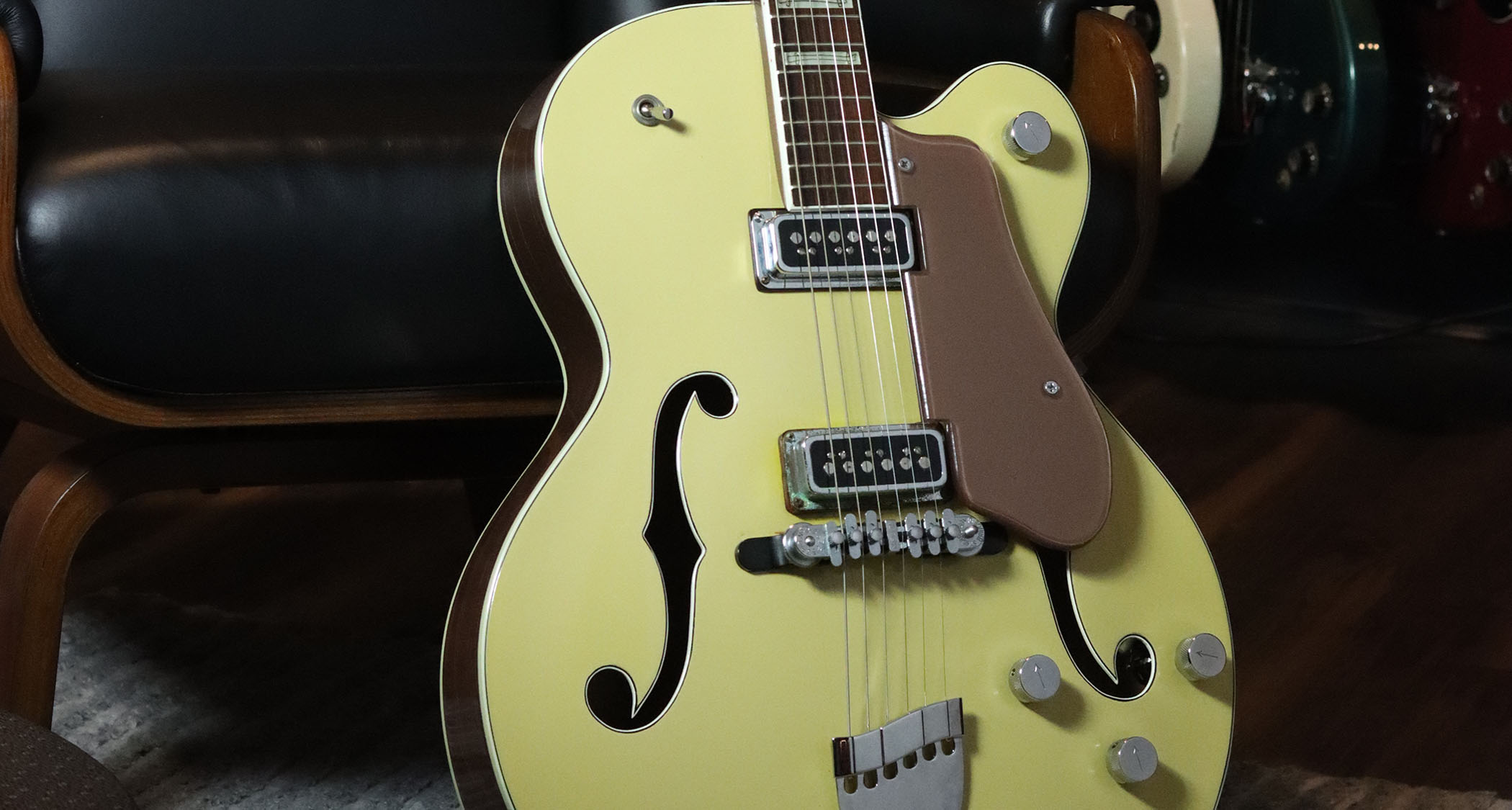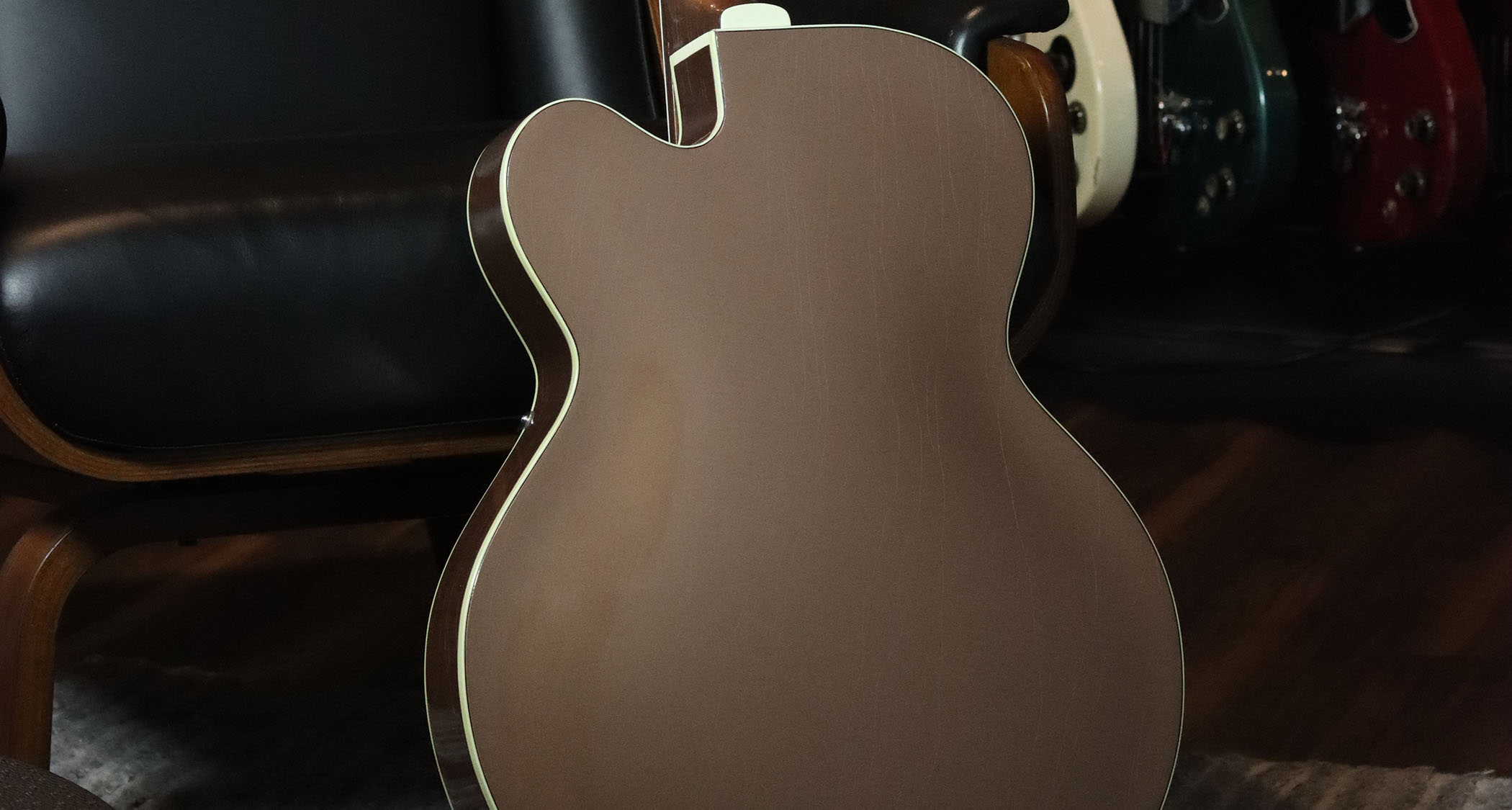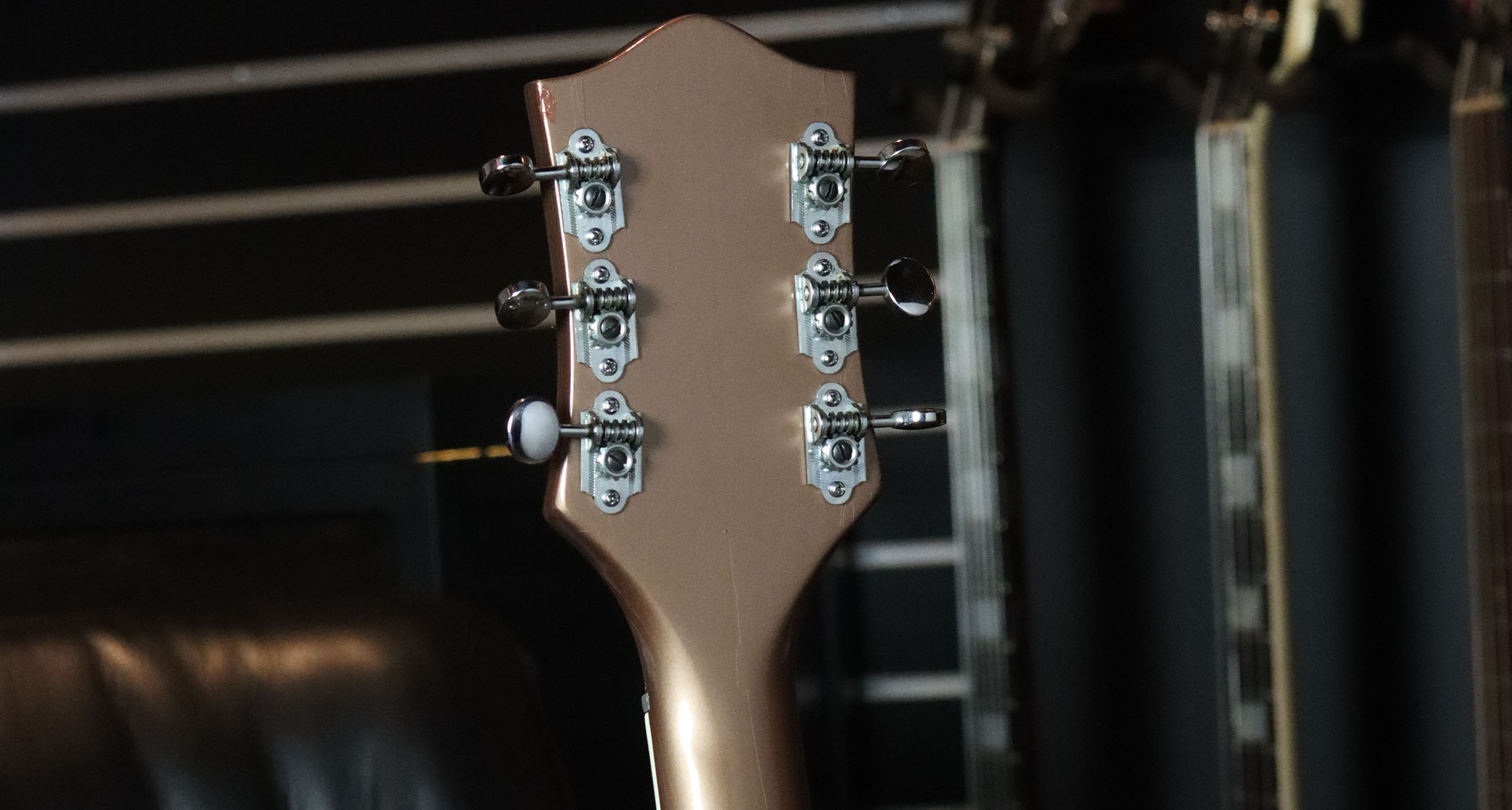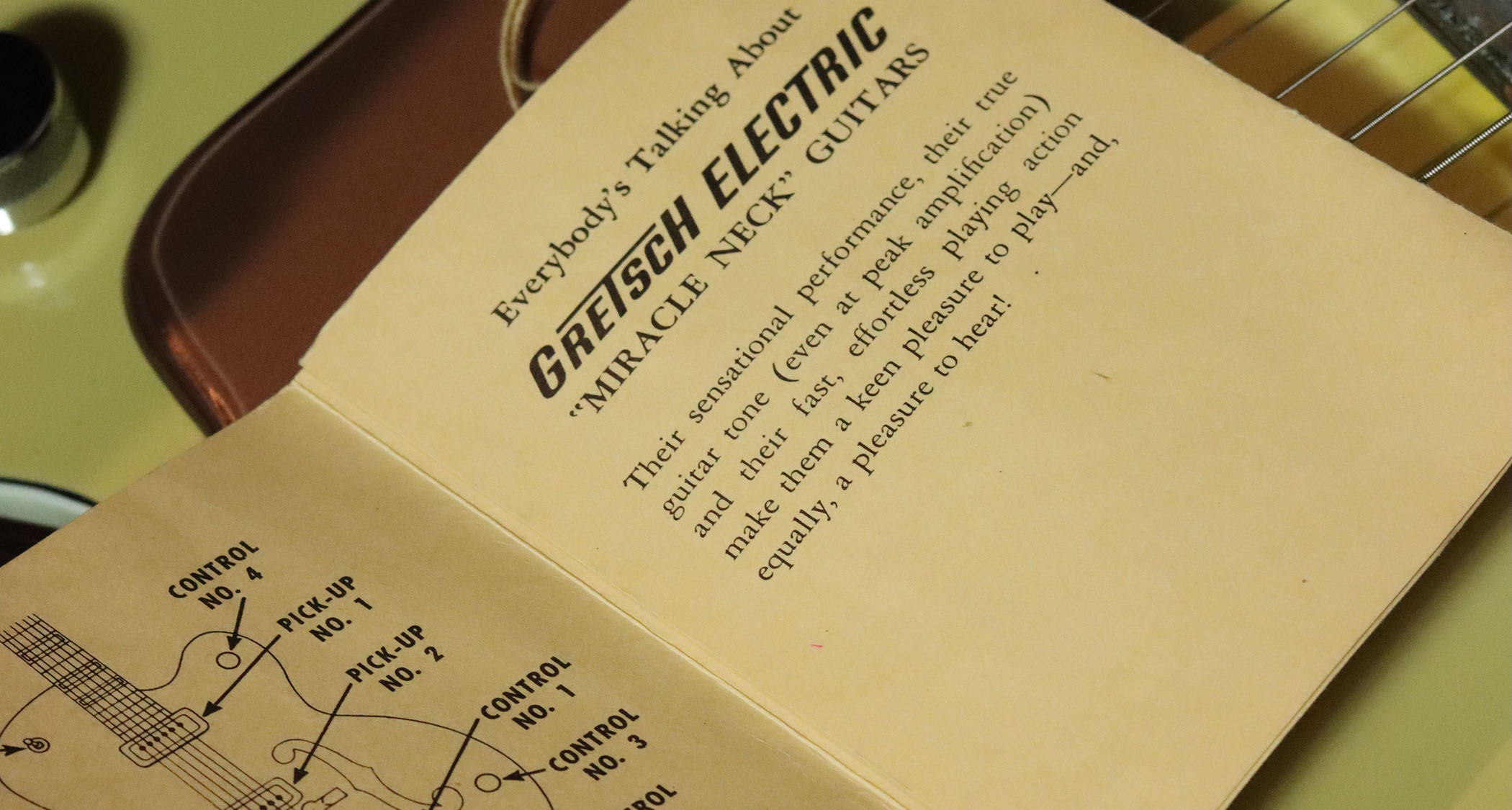“They’re hard to sell, particularly when they have issues. The only models that fetch a premium are the White Falcon and Penguin, and the 6120”: Buying a vintage Gretsch guitar can be a gamble – but every pro should have one
We take a closer look at a pristine 1955 Gretsch Streamliner – a guitar that’s indicative of the attention to detail of the era and a reminder that everyone needs a Gretsch

This is a virtually immaculate Jaguar Tan over Copper Mist Gretsch Streamliner. There is absolutely no colour fading, and the best part is that it has Western motif inlays on the fretboard. That makes it such a cool and unique piece, and it may have been a custom order because I’ve never seen another one.
Then again, it might have been a 6120 fretboard that was just laying around and they slapped it on there. After all, we are talking about Gretsch.
Streamliners were not premium guitars in the Gretsch catalogue, but even so, you have to appreciate the attention to detail. Sometimes the cheaper Gretches were only some f-hole or fretboard binding away from being identical to the high-end models, and this Streamliner is essentially the same as a 1955 6120.
The matching Copper Mist pickguard has almost no pick marks on it and is like brand-new, so I don’t think this guitar has ever really been played. The binding has no cracks or rot.
The neck angle is perfect, which is a real bonus. Whenever we have to reset a Gretsch neck, we never know what we’re going to find when the neck comes off. We’ve had sawdust fall out, pieces of cork and even glue-impregnated cardboard. It was like the joints were routed with a spoon and they used whatever they could find just to fill the gaps. Fred Gretsch Jr once told me they would go out for three-Martini lunches and come back later in the afternoon to build guitars.
Here, we have the Melita bridge with plastic feet and individual intonation adjustment for the strings. The only negative I can find is a bit of off-gassing on the pickup spacer that’s under the bridge pickup. This is very common on Gretsches from this era, and although it’s holding together, it might need replacing in a couple of years.

The guitar has the aluminium nut, arrow inlaid knobs and, besides the strings, it’s basically ‘new old stock’. There are no nicks or dents, no buckle rash, and the back of the neck has no playwear. The neck profile is basically a medium C and a little flat up near the 1st fret, but it rounds out by the 3rd fret.
All the latest guitar news, interviews, lessons, reviews, deals and more, direct to your inbox!
It plays extremely well, and while you might think that’s only to be expected with a guitar that’s almost untouched, I would say that 90 per cent of the Gretsches from the vintage era that have passed through my hands have had some sort of problem.


The neck pickup is very mellow and bluesy, and it’s a really beautiful sound. I find that when I roll back the volume controls both pickups sound even sweeter. There are master volume and tone controls, too, plus a three-way pickup selector switch. Most Gretsch fans tend to go for Filter’Tron pickups, but there is a crowd that prefers these DeArmond Dynasonics.
I bought it from the original owner in 2002 and I’m very happy with this one, which is something that’s rare for me to say about Gretsches. It comes with the original snowflake case and there are some nice tags and the original cable in there.

I think Gretsch was operating on a tight budget and competing against companies that could make much finer instruments, but they managed to find a niche. They may not have been the best guitars, but they left a giant mark and have influenced more than one generation of player.
It was like the joints were routed with a spoon and they used whatever they could find just to fill the gaps
It’s hard to say if vintage Gretsch guitars will ever become really popular again. I can report that they’re hard to sell, particularly when they have issues. The only models that fetch a premium are the White Falcon and Penguin, and the 6120.
All the other models tend to sit around the shop for a very long time and the longer they’re out in the air, the worse it is for them. So we have to try to sell them on quickly because it’s like musical chairs. If you’re unlucky, a Gretsch will decide to fall apart while you own it, so you’re stuck with the expense. But if you can move it on, it becomes someone else’s problem.

The old slogan they used was ‘The Great Gretsch Sound’, and there is no other guitar that looks or sounds like them; they’re easy to identify on records.
To my eye, a black Duo Jet with a Bigsby is a cooler-looking guitar than a Goldtop, and although a Gretsch would never be my go-to guitar, every pro player should have one in their toolbox.
- Vintage guitar veteran David Davidson owns Well Strung Guitars in Farmingdale, New York.
- This article first appeared in Guitarist. Subscribe and save.
You must confirm your public display name before commenting
Please logout and then login again, you will then be prompted to enter your display name.
